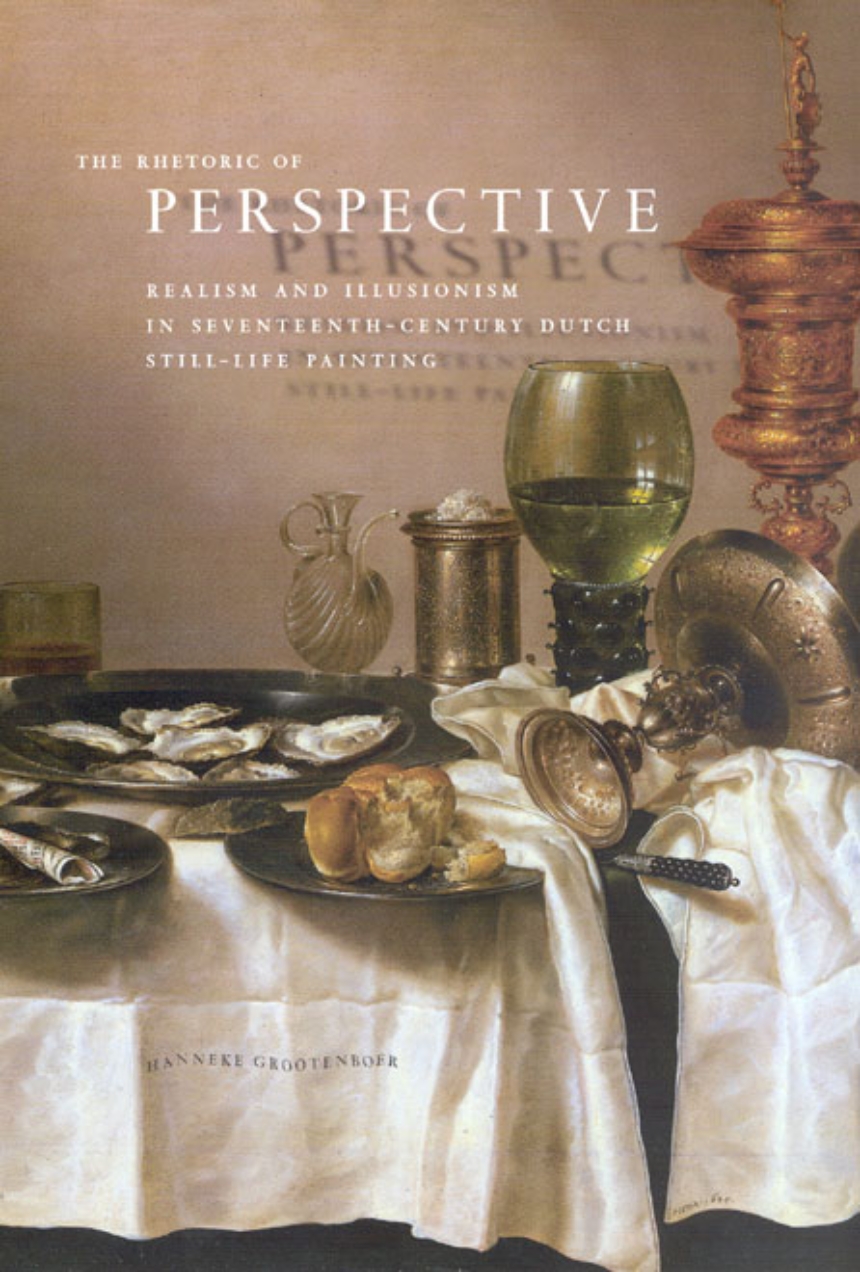The Rhetoric of Perspective
Realism and Illusionism in Seventeenth-Century Dutch Still-Life Painting
9780226309705
9780226309682
The Rhetoric of Perspective
Realism and Illusionism in Seventeenth-Century Dutch Still-Life Painting
Perspective determines how we, as viewers, perceive painting. We can convince ourselves that a painting of a bowl of fruit or a man in a room appears to be real by the way these objects are rendered. Likewise, the trick of perspective can prevent us from being absorbed in a scene. Connecting contemporary critical theory with close readings of seventeenth-century Dutch visual culture, The Rhetoric of Perspective puts forth the claim that painting is a form of thinking and that perspective functions as the language of the image.
Aided by a stunning full-color gallery, Hanneke Grootenboer proposes a new theory of perspective based on the phenomenological aspects of non-narrative still-life, trompe l’oeil, and anamorphic imagery. Drawing on playful and mesmerizing baroque images, Grootenboer characterizes what she calls their "sophisticated deceit," asserting that painting is more about visual representation than about its supposed objects.
Offering an original theory of perspective’s impact on pictorial representation, the act of looking, and the understanding of truth in painting, Grootenboer shows how these paintings both question the status of representation and explore the limits and credibility of perception.
Aided by a stunning full-color gallery, Hanneke Grootenboer proposes a new theory of perspective based on the phenomenological aspects of non-narrative still-life, trompe l’oeil, and anamorphic imagery. Drawing on playful and mesmerizing baroque images, Grootenboer characterizes what she calls their "sophisticated deceit," asserting that painting is more about visual representation than about its supposed objects.
Offering an original theory of perspective’s impact on pictorial representation, the act of looking, and the understanding of truth in painting, Grootenboer shows how these paintings both question the status of representation and explore the limits and credibility of perception.
“An elegant and honourable synthesis.”—Keith Miller, Times Literary Supplement
Reviews
Table of Contents
List of Illustrations
Acknowledgments
Introduction: The Thought of Painting
1. The Invisibility of Depth
Merleau-Ponty, Lacan, and the Lure of Painting
2. Truth in Breakfast Painting
Horror Vacui versus the Void and Pascal’s Geometrical Rhetoric
3. The Rhetoric of Perspective
Panofsky, Damisch, and Anamorphosis
4. Perspective as Allegorical Form
Vanitas Painting and Benjamin’s Allegory of Truth
Conclusion: The Look of Painting
Notes
Bibliography
Index
Acknowledgments
Introduction: The Thought of Painting
1. The Invisibility of Depth
Merleau-Ponty, Lacan, and the Lure of Painting
2. Truth in Breakfast Painting
Horror Vacui versus the Void and Pascal’s Geometrical Rhetoric
3. The Rhetoric of Perspective
Panofsky, Damisch, and Anamorphosis
4. Perspective as Allegorical Form
Vanitas Painting and Benjamin’s Allegory of Truth
Conclusion: The Look of Painting
Notes
Bibliography
Index
